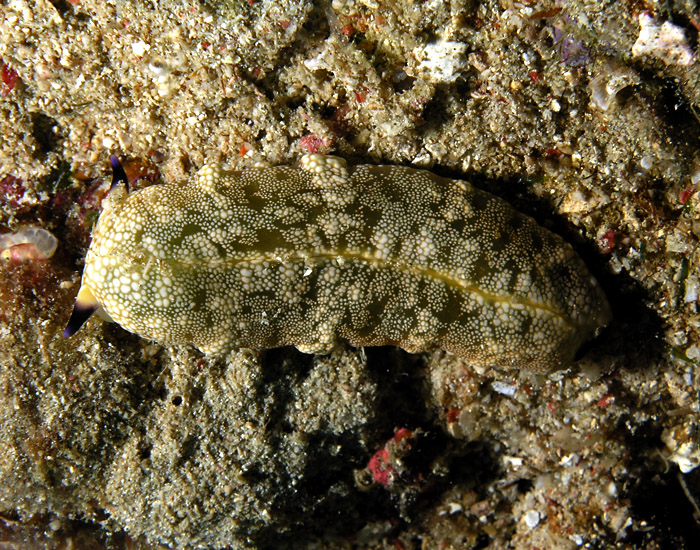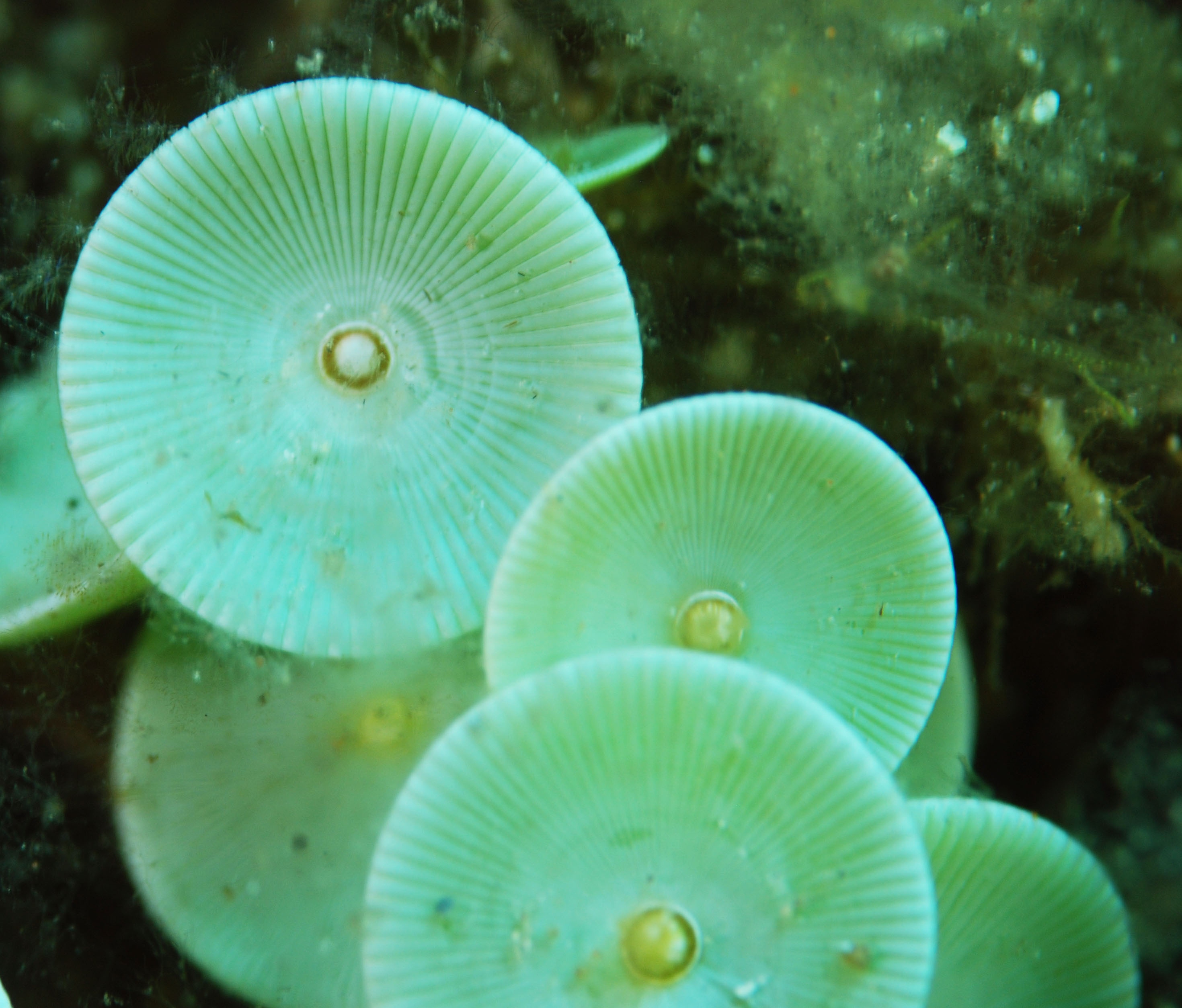|
Plakobranchus Ocellatus
''Plakobranchus ocellatus'' is a species of sea slug, a sacoglossan, a marine opisthobranch gastropod mollusk in the family Plakobranchidae.Gofas, S. (2014)''Plakobranchus ocellatus'' van Hasselt, 1824.Accessed through: World Register of Marine Species on 2014-11-08 It is found in shallow water in the Indo-Pacific region. Distribution This species occurs in the Indo-Pacific. Recent work on the photosynthetic abilities of ''Plakobranchus'' reveals that ''P. ocellatus'' is actually a species complex consisting of at least four distinct clades.Christa G., Wescott L., Schäberle T.F., König G.M., Wägele H., (2013) ''What remains after 2 months of starvation? Analysis of sequestered algae in a photosynthetic slug, ''Plakobranchus ocellatus'' (Sacoglossa, Opisthobranchia), by barcoding.'' Planta. Feb;237(2):559-72. doi: 10.1007/s00425-012-1788-6. Epub 2012 Oct 30. Description The body is broad, truncate, and rather flattened, up to long. The head is flat and squarish, the rh ... [...More Info...] [...Related Items...] OR: [Wikipedia] [Google] [Baidu] |
Animal
Animals are multicellular, eukaryotic organisms in the Kingdom (biology), biological kingdom Animalia. With few exceptions, animals Heterotroph, consume organic material, Cellular respiration#Aerobic respiration, breathe oxygen, are Motility, able to move, can Sexual reproduction, reproduce sexually, and go through an ontogenetic stage in which their body consists of a hollow sphere of Cell (biology), cells, the blastula, during Embryogenesis, embryonic development. Over 1.5 million Extant taxon, living animal species have been Species description, described—of which around 1 million are Insecta, insects—but it has been estimated there are over 7 million animal species in total. Animals range in length from to . They have Ecology, complex interactions with each other and their environments, forming intricate food webs. The scientific study of animals is known as zoology. Most living animal species are in Bilateria, a clade whose members have a Symmetry in biology#Bilate ... [...More Info...] [...Related Items...] OR: [Wikipedia] [Google] [Baidu] |
Gastropod
The gastropods (), commonly known as snails and slugs, belong to a large taxonomic class of invertebrates within the phylum Mollusca called Gastropoda (). This class comprises snails and slugs from saltwater, from freshwater, and from land. There are many thousands of species of sea snails and slugs, as well as freshwater snails, freshwater limpets, and land snails and slugs. The class Gastropoda contains a vast total of named species, second only to the insects in overall number. The fossil history of this class goes back to the Late Cambrian. , 721 families of gastropods are known, of which 245 are extinct and appear only in the fossil record, while 476 are currently extant with or without a fossil record. Gastropoda (previously known as univalves and sometimes spelled "Gasteropoda") are a major part of the phylum Mollusca, and are the most highly diversified class in the phylum, with 65,000 to 80,000 living snail and slug species. The anatomy, behavior, feeding, and re ... [...More Info...] [...Related Items...] OR: [Wikipedia] [Google] [Baidu] |
Halimeda Macroloba
''Halimeda'' is a genus of green macroalgae. The algal body (thallus) is composed of calcified green segments. Calcium carbonate is deposited in its tissues, making it inedible to most herbivores. However one species, '' Halimeda tuna'', was described as pleasant to eat with oil, vinegar, and salt. As in other members of the order Bryopsidales, individual organisms are made up of single multi-nucleate cells. Whole meadows may consist of a single individual alga connected by fine threads running through the substrate. ''Halimeda'' is responsible for distinctive circular deposits in various parts of the Great Barrier Reef on the north-east coast of Queensland, Australia. ''Halimeda'' beds form in the western or lee side of outer shield reefs where flow of nutrient-rich water from the open sea allows them to flourish, and are the most extensive, actively accumulating ''Halimeda'' beds in the world. The genus is one of the best studied examples of cryptic species pairs due to morph ... [...More Info...] [...Related Items...] OR: [Wikipedia] [Google] [Baidu] |
Acetabularia
''Acetabularia'' is a genus of green algae in the family Polyphysaceae, Typically found in subtropical waters, ''Acetabularia'' is a single-celled organism, but gigantic in size and complex in form, making it an excellent model organism for studying cell biology. In form, the mature ''Acetabularia'' resembles the round leaves of a nasturtium, is 4 to 10 cm tall and has three anatomical parts: a bottom rhizoid that resembles a set of short roots; a long stalk in the middle; and a top umbrella of branches that may fuse into a cap. Unlike other giant unicellular organisms, which are multinucleate, ''Acetabularia'' has a single nucleus, located in the rhizoid and allows the cell to regenerate completely if its cap is removed. The caps of two ''Acetabularia'' may also be exchanged, even from two different species. In addition, if a piece of the stem is removed, with no access to the nucleus in the rhizoid, this isolated stem piece will also grow a new cap. In the 1930s–195 ... [...More Info...] [...Related Items...] OR: [Wikipedia] [Google] [Baidu] |
Udotea
''Udotea'' is a genus of green algae in the family Udoteaceae Udoteaceae is a family of green algae, in the order Bryopsidales. Description Udoteaceae is a family of green algae that belongs to the order Bryopsidales. Udoteaceae are most abundant in reef ecosystems as it serves an important ecological .... Taxonomy and Nomenclature Udoteaceae are generally described based on vegetative characters of fully-developed thalli''''. Most species of ''Udotea'' tend to have blades that are single or multiple layers with branching siphons attaching to adjacent siphons. In some species, a characteristic similar to Udoteacean genera are observed such as small protuberances or attachments on the sides of the blades. An issue on monophyly may arise among ''Udotean'' species as some exhibit similar blade characteristics of other genera such as ''Flabellia'' and ''Halimeda''. In some, blades lacking cortex, appearing as a brush may resemble ''Rhipocephalus, Rhipidosiphon, Rhipiliopsi ... [...More Info...] [...Related Items...] OR: [Wikipedia] [Google] [Baidu] |
Caulerpa
''Caulerpa'' is a genus of seaweeds in the family Caulerpaceae (among the green algae). They are unusual because they consist of only one cell with many nuclei, making them among the biggest single cells in the world. A species in the Mediterranean can have a stolon more than long, with up to 200 fronds. This species can be invasive from time to time. Referring to the crawling habit of its thallus, the name means 'stem (that) creeps', from the Ancient Greek ' (, ‘stalk’) and ' (, ‘to creep’). Taxonomy and nomenclature First described by Jean Vincent Lamouroux in 1809, ''Caulerpa'' is the only genus under the family Caulerpaceae, from the order Bryopsidales, class Ulvophyceae, and phylum Chlorophyta. Through the use of ''tuf''A gene sequencing, it was revealed that ''Pseudochlorodesmis'' F. Børgesen was a sister clade of ''Caulerpa''. Cremen et al. proposed a new classification scheme in Bryopsidales, wherein Caulerpaceae and Halimedaceae were described as sister fami ... [...More Info...] [...Related Items...] OR: [Wikipedia] [Google] [Baidu] |
Halimeda
''Halimeda'' is a genus of green macroalgae. The algal body (thallus) is composed of calcified green segments. Calcium carbonate is deposited in its tissues, making it inedible to most herbivores. However one species, '' Halimeda tuna'', was described as pleasant to eat with oil, vinegar, and salt. As in other members of the order Bryopsidales, individual organisms are made up of single multi-nucleate cells. Whole meadows may consist of a single individual alga connected by fine threads running through the substrate. ''Halimeda'' is responsible for distinctive circular deposits in various parts of the Great Barrier Reef on the north-east coast of Queensland, Australia. ''Halimeda'' beds form in the western or lee side of outer shield reefs where flow of nutrient-rich water from the open sea allows them to flourish, and are the most extensive, actively accumulating ''Halimeda'' beds in the world. The genus is one of the best studied examples of cryptic species pairs due to morph ... [...More Info...] [...Related Items...] OR: [Wikipedia] [Google] [Baidu] |
Plakobranchus Ocellatus 4
''Plakobranchus'' is a genus of sea slugs, sacoglossans, marine opisthobranch gastropod mollusks in the family Plakobranchidae.Gofas, S. (2012)''Plakobranchus'' van Hasselt, 1824.Accessed through: World Register of Marine Species on 2012-03-08 The author of the genus spelled the name originally as ''Plakobranchus'', but the spelling ''Placobranchus'' was a long time the prevailing usage, based on an incorrect subsequent spelling by Férussac (1824) in a translation of van Hasselt's work. Species Species within the genus ''Plakobranchus'' include: * '' Plakobranchus noctisstellatus'' Mehrotra, Caballer, C.M. Scott, Arnold, Monchanin & Chavanich, 2020 * ''Plakobranchus ocellatus'' van Hasselt, 1824 * '' Plakobranchus papua'' Meyers-Muñoz & van der Velde, 2016 Recent work on the photosynthetic abilities of ''Plakobranchus'' reveals that ''P. ocellatus'' is actually a species complex.Christa G., Wescott L., Schäberle T.F., König G.M., Wägele H., (2013) ''What remains after ... [...More Info...] [...Related Items...] OR: [Wikipedia] [Google] [Baidu] |
Plakobranchus Ocellatus 3
''Plakobranchus'' is a genus of sea slugs, sacoglossans, marine (ocean), marine opisthobranch gastropod mollusks in the family (biology), family Plakobranchidae.Gofas, S. (2012)''Plakobranchus'' van Hasselt, 1824.Accessed through: World Register of Marine Species on 2012-03-08 The author of the genus spelled the name originally as ''Plakobranchus'', but the spelling ''Placobranchus'' was a long time the prevailing usage, based on an incorrect subsequent spelling by Férussac (1824) in a translation of van Hasselt's work. Species Species within the genus ''Plakobranchus'' include: * ''Plakobranchus noctisstellatus'' Mehrotra, Caballer, C.M. Scott, Arnold, Monchanin & Chavanich, 2020 * ''Plakobranchus ocellatus'' van Hasselt, 1824 * ''Plakobranchus papua'' Meyers-Muñoz & van der Velde, 2016 Recent work on the photosynthetic abilities of ''Plakobranchus'' reveals that ''P. ocellatus'' is actually a species complex.Christa G., Wescott L., Schäberle T.F., König G.M., Wägele H. ... [...More Info...] [...Related Items...] OR: [Wikipedia] [Google] [Baidu] |





